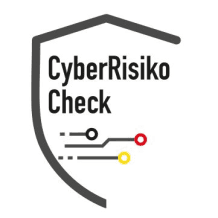What is Spoofing?
Spoofing is a malicious activity in the cyber world where a person or a program pretends to be another entity to gain fraudulent benefits. It encompasses a range of techniques in which information is faked or manipulated to gain trust or access to confidential data.
Types of Spoofing
1. Email Spoofing
Email spoofing is a common attack where the sender of an email is manipulated to make the email appear credible. This technique is often used in phishing attacks to trick recipients into opening harmful attachments or clicking on fake links.
2. IP Spoofing
In IP spoofing, the attacker falsifies the source IP address of a packet to appear as a trusted device in the network. This can be used to bypass security measures or to infiltrate a network unnoticed.
3. Website Spoofing
This type of spoofing involves creating web pages that look deceptively similar to legitimate sites. These fake pages are used to lure users into entering sensitive information such as passwords or credit card numbers.
4. DNS Spoofing
In DNS spoofing, the attacker manipulates DNS resolution to redirect users to fake websites. This can lead to identity theft and financial losses if confidential information is disclosed.
5. ARP Spoofing
ARP spoofing targets the Address Resolution Protocol (ARP) in a local network. Attackers send fake ARP messages to manipulate the mapping between IP addresses and MAC addresses, which is often utilized for man-in-the-middle attacks.
Risks of Spoofing
The biggest risk factor in spoofing is the loss of sensitive information. Attackers can cause financial damage, jeopardize corporate integrity, facilitate identity theft, and trigger severe data breaches. A company's reputation can be severely harmed if customers lose trust.
Protective Measures Against Spoofing
✔ Use strong, regularly updated passwords and two-factor authentication to protect accounts from unauthorized access.
✔ Implement email authentication protocols like SPF, DKIM, and DMARC to reduce the likelihood of email spoofing.
✔ Utilize antivirus and antimalware programs to detect and block harmful software early.
✔ Regularly train employees on cybersecurity topics to increase awareness and vigilance against spoofing attacks.
✔ Continuously monitor networks for suspicious activities and use intrusion detection systems.
Conclusion
Spoofing is a widespread cyber threat that must be taken seriously. By implementing appropriate security measures and increasing security awareness, companies and individuals can significantly reduce the risk of a spoofing attack. To be comprehensively protected, it is essential to integrate both technical solutions and training measures.
📌 Related Terms: Phishing, Cyber Attacks, IT Security
Spoofing in Germany: Current Developments
The significance of spoofing in Germany is continuously growing. According to recent studies from the Federal Office for Information Security (BSI), German companies are increasingly affected by cyber threats. The Bitkom association reports that 84% of German companies have fallen victim to cyber attacks in the last two years.
Particularly in the area of spoofing, the following trends are emerging:
Increasing investments in preventive security measures
Heightened awareness of comprehensive security concepts
Integration of spoofing into existing compliance frameworks
EU Compliance and Spoofing
With the introduction of the NIS2 directive and stricter GDPR requirements, German companies need to adjust their security strategies. Spoofing plays a central role in meeting regulatory requirements.
Important compliance aspects:
Documentation of security measures
Regular review and updates
Proof of effectiveness to regulatory authorities
Practical Implementation in Corporate Everyday Life
Integrating spoofing into corporate everyday life requires a structured approach. Companies typically benefit from a gradual implementation that considers both technical and organizational aspects.
Consider spoofing like insurance for your business: The better prepared you are, the lower the risk of damage from security incidents.
Further Security Measures
For a comprehensive security strategy, you should combine spoofing with other security measures:
Vulnerability Management - Systematic vulnerability management
Penetration Testing - Comprehensive security tests
Security Hardening - Employee awareness
Incident Response Plan - Preparation for security incidents
Conclusion and Next Steps
Spoofing is an essential building block of modern cybersecurity. Investing in professional spoofing measures pays off in the long term through increased security and compliance conformity.
Do you want to optimize your security strategy? Our experts are happy to advise you on implementing spoofing and other security measures. Contact us for a non-binding initial consultation.
🔒 Act now: Have your current security situation evaluated by our experts
📞 Request advice: Schedule a free initial consultation on spoofing
📋 Compliance Check: Review your current compliance situation
📌 Related Topics: Cybersecurity, IT Security, Compliance Management, Risk Assessment
Best Practices for Spoofing
The successful implementation of spoofing requires a systematic approach. Based on our many years of experience in cybersecurity consulting, the following best practices have proven effective:
Strategic Planning
A well-thought-out strategy is the foundation for successful spoofing. You should consider the following aspects:
Define clear objectives and success measurements
Involve stakeholders early and establish responsibilities
Calculate realistic timelines and budgets
Conduct risk assessment and contingency planning
Technical Implementation
The technical implementation of spoofing should be done gradually:
Analysis of the Current Situation: Evaluation of existing security measures
Gap Analysis: Identification of improvement potentials
Pilot Project: Test run in a limited area
Rollout: Gradual expansion to the entire company
Monitoring: Continuous surveillance and optimization
Common Challenges and Solutions
Similar challenges frequently arise during the implementation of spoofing. Here are proven solutions approaches:
Resistance to Change
Employees are often skeptical of new security measures. Successful change management strategies include:
Transparent communication about benefits and necessity
Training and continuing education measures
Involvement of opinion leaders as multipliers
Gradual introduction with quick wins
Budget Constraints
Limited resources require a prioritized approach:
ROI calculation for various measures
Phased implementation according to priorities
Utilization of synergies with existing systems
Consideration of compliance requirements
Success Measurement and KPIs
The success of spoofing measures should be measurable. Relevant metrics include:
Quantitative Metrics
Number of identified and resolved vulnerabilities
Reduction of average response time to security incidents
Improvement of compliance ratings
ROI of implemented security measures
Qualitative Assessments
Employee satisfaction and acceptance
Feedback from customers and partners
Evaluation by external auditors
Reputation and trust in the market
Future Trends and Developments
The landscape of cybersecurity is continuously evolving. Current trends that influence spoofing include:
Artificial Intelligence: AI-powered threat detection and defense
Zero Trust Architecture: Trust is not assumed but continuously verified
Cloud Security: Adaptation to hybrid and multi-cloud environments
IoT Security: Protection of connected devices and systems
Quantum Computing: Preparation for post-quantum cryptographic methods
Companies that invest in spoofing today are optimally positioned for future challenges and opportunities.
Your Next Step
The implementation of spoofing is an investment in the future of your company. Our experts can assist you in developing a tailored solution that meets your specific requirements.
Start today:
📞 Free Consultation: Schedule a non-binding conversation
📋 Security Assessment: Have your current security situation evaluated
🎯 Customized Solution: Development of an individual spoofing strategy
🚀 Implementation: Professional execution with ongoing support
Contact us today and take the first step towards a safer digital future.




